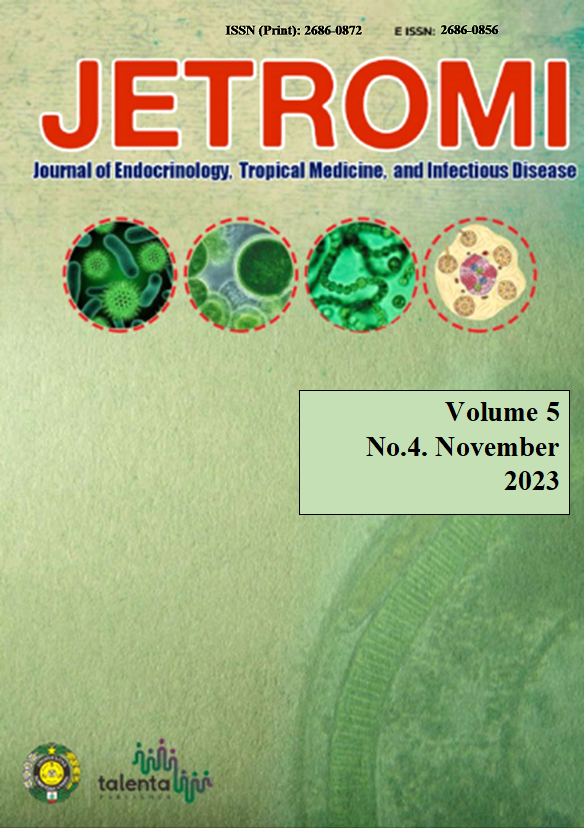Prevalence of Congenital Heart Disease and Pediatric Rhythm Disorder or Arrhythmia in Children in Rantau-Prapat City, North Sumatra, Indonesia
DOI:
https://doi.org/10.32734/jetromi.v5i4.14332Keywords:
Congenital heart disease, arrythmia, pediatric rhythm disorder, childrenAbstract
Background: Cardiovascular diseases (CVD) are responsible for the leading cause of a 30%Â global mortality rate and are a major contributor to reducing the quality of life. Approximately 25% of the cardiovascular mortality rate is caused by sudden cardiac deaths and cardiac arrhythmias are one of the causes of sudden cardiac deaths. Besides that, Congenital Heart Disease (CHD) also contributes mortality rate in children. Long-term experience has provided evidence that systematic screening, with 12-lead ECG, after history and physical examination, is effective in identifying individuals with potentially lethal cardiovascular disease for early intervention. However, in Indonesia screening for heart abnormalities and rhythm disorder in children has not yet been systematically established.
Method: This study was a descriptive study conducted through a cross-sectional study design. The primary objective was to assess the congenital heart disease (CHD) and Arryhtmia prevalence in children in Rantau City. Data was collected from interviews and on-the-spot examination with validated measurement tools. Data was analyzed using SPSS version 26. Categorical variables were presented using frequency (n) and percentage (%), and numerical variables with normally distributed data were presented with mean and standard deviation (SD). In non-normally distributed data, numerical variables were presented using the median and interquartile range.
Results: There were 157 children included in this study. Most subjects were female (n=94, 59.9%) in the age range of 12 to 16 years old. Most subjects (n=129, 82.2%) had normal sinus rhythm. The only rhythm disorder that was found in this study was sinus tachycardia (n=28, 17,8%). One subject (0,9%) had congenital heart disease, which was a secundum atrial septal defect.
Conclusion: In the children population in Rantau-Prapat city, the most common arrhythmia found in children was sinus tachycardia. The atrial septal defect was the only congenital heart disease found.
Downloads
Downloads
Published
Issue
Section
License
Copyright (c) 2023 Journal of Endocrinology, Tropical Medicine, and Infectious Disease (JETROMI)

This work is licensed under a Creative Commons Attribution-NonCommercial-ShareAlike 4.0 International License.
The Authors submitting a manuscript do so on the understanding that if accepted for publication, copyright of the article shall be assigned to Journal of Endocrinology, Tropical Medicine and Infectious Diseases (JETROMI).
Copyright encompasses exclusive rights to reproduce and deliver the article in all form and media. The reproduction of any part of this journal, its storage in databases and its transmission by any form or media, will be allowed only with a written permission from Journal of Endocrinology, Tropical Medicine and Infectious Diseases (JETROMI).








